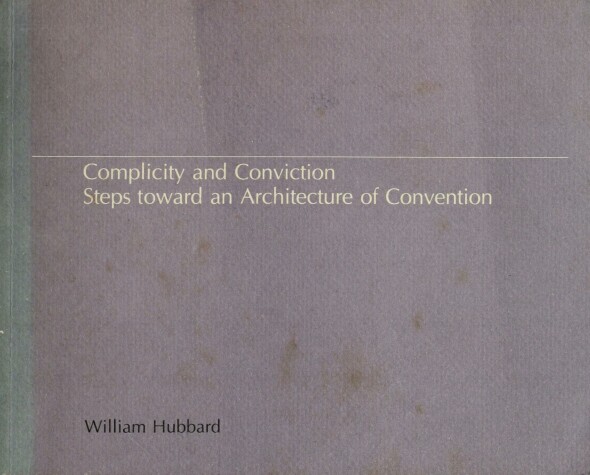This book is about a failure of nerve in architecture, a failure the author contends is as threatening to human values as it is to the creative act itself.For almost two decades the tenets of modern architecture have been under attack, but until now the attack has centered on the abuses of modernist buildings rather than the abuses of modernist ideas. "Complicity and Conviction" shows how both modernism and its alternative, postmodernism, would have us believe that the form of buildings comes not from human volition but from extrapersonal forces at work in the world. The book asserts that this idea has become so pervasive that today neither architects nor society see architecture as a vehicle for embodying human concerns."Complicity and Conviction" seeks to rescue architecture from this self-imposed irrelevance by taking a new look at convention--not as a mindless habit but as a realistic means for giving concrete form to cherished human values. The book shows how three systems of conventions reflect such values: games, where made-up rules provide a realm of action that embodies our sense of what's fair; typography, where the conventions of printing produce pages that look right; and the law, where by following conventional procedures, judges are able to create rulings that embody our sense of what is just. It points out that while we know all of these creations (the rules, the pages, the laws) could have been otherwise, still we are able to give our complicity to them and feel a conviction that they are somehow right."Complicity and Conviction" uncovers the principles or strategies that elicit this complicity from us and then reformulates them as strategies for producing architecture. The book illustrates how two building projects unwittingly but successfully embody these strategies--Thomas Jefferson's Lawn at the University of Virginia (where the author received his undergraduate degree) and Kresge College at the University of California at Santa Cruz ("Having visited and been deeply affected by Kresge, I wanted to see if my critical method could isolate and highlight reasons for liking it that would 'ring true, ' that would make articulate and systematic the unformed liking I felt for the place.") A final chapter discusses works by Venturi, Johnson, Graves, Hardy Holzman Pfeiffer, Meier, and Eisenman, showing specific ways in which their works both support and undercut our sense of conviction.
- ISBN10 0262081067
- ISBN13 9780262081061
- Publish Date August 1980
- Publish Status Active
- Out of Print 6 July 2021
- Publish Country US
- Publisher MIT Press Ltd
- Imprint MIT Press
- Format Hardcover
- Pages 248
- Language English
